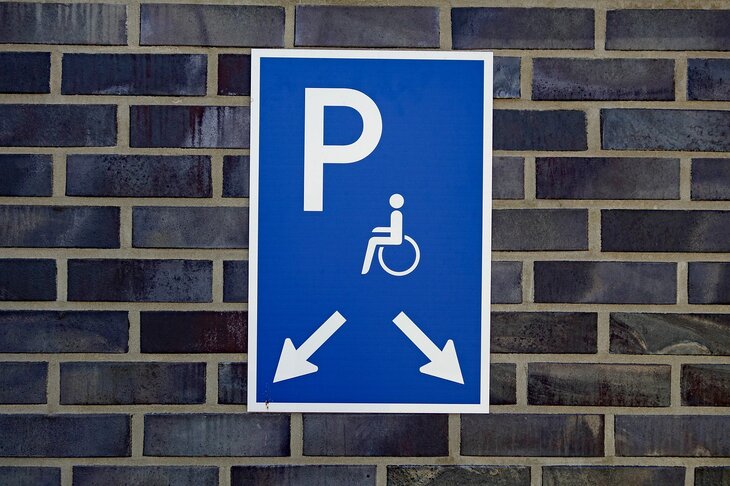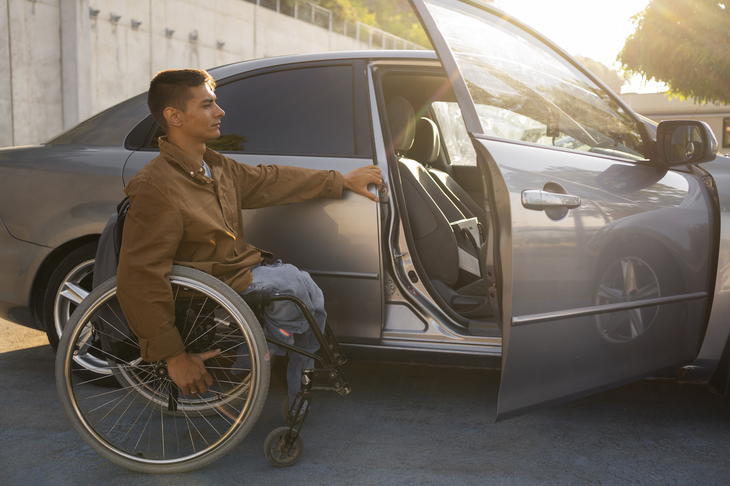Driving is often a symbol of independence and freedom. Yet, for disabled people, this seemingly simple activity can become a struggle that impacts their overall lives. Most of the challenges for disabled drivers stem from many factors, including the accessibility of vehicles, the availability of supportive services, and the adequacy of infrastructure.
This article explores the top challenges disabled drivers face, giving insights into each obstacle and practical solutions to overcome them. Highlighting these issues and providing actionable advice may enhance the driving experience for disabled people, which helps them enjoy the same freedom and independence as their non-disabled peers.
1. Accessible Vehicles for Drivers with Disabilities
One of the most significant barriers for disabled drivers is the lack of accessible vehicle options. As such, many cars are not designed to accommodate specific needs, making it difficult for disabled drivers to operate them comfortably and safely.
How to Solve Them:
Vehicle Modifications for Disabled Drivers:
Investing in vehicle modifications can make driving more accessible. This may include installing hand controls, wheelchair lifts, or specialized seating. As well, you can customize the adaptive equipment to meet your needs, enabling a safer and more comfortable driving experience.
Adaptive Driving Equipment for Disabilities:
There are plenty of adaptive driving aids available. For instance, steering wheel knobs are great for those with limited hand mobility, while voice-activated controls can aid drivers with reduced physical abilities.
2. Parking for Disabled Drivers
Accessible parking spaces are a major concern for many disabled drivers. While handicap parking permits supply access to designated parking spots, finding these spots and assuring their proper use can still be hard.
How to Solve Them:
Parking Solutions for Disabled Drivers:
Using parking apps and services can help locate available accessible parking spots. In fact, many cities are improving the availability of accessible parking and enforcing regulations more rigorously to prevent handicap parking misuse.
Handicap Parking Permits:
Obtaining a handicap parking permit is key for accessing designated parking spaces. You can get these permits from state or local authorities and apply for them online or through a local Department of Motor Vehicles (DMV). Certainly, it’s important to know the specific regulations and renewal processes to ensure continued access to these spaces.
3. Costs of Modifications and Equipment
The cost of vehicle modifications and adaptive equipment can be a significant barrier. Oftentimes, these expenses are high and not always covered by insurance, making financial assistance crucial.
How to Solve Them:
Financial Assistance and Grants:
Many organizations and programs offer financial assistance for adaptive driving equipment. The National Mobility Equipment Dealers Association (NMEDA) and local disability advocacy groups can extend information on available grants and funding options.
Insurance and Funding Options:
Some insurance plans may cover a portion of the costs associated with vehicle modifications. It pays to explore all available funding options and work with insurance providers to determine coverage and reimbursement possibilities.

4. Road Infrastructure and Safety
Inadequate road infrastructure can pose safety risks for disabled drivers. Challenges such as poorly maintained sidewalks, inadequate curb cuts, and limited accessible public transit options can impact driving safety.
How to Solve Them:
Advocacy for Road Infrastructure Improvements:
Engaging in community planning and giving feedback on road infrastructure can help address these issues. Preaching for better-designed roadways and more accessible public transportation options can improve safety for all drivers.
Safety Devices and Features:
Using additional safety devices, such as backup cameras and collision avoidance systems, can enhance driving safety for disabled individuals. Indeed, these features can provide extra reassurance and help prevent accidents.
5. Lack of Support Services
A shortage of local support services can make it tricky for disabled drivers to find the assistance they need, from adaptive equipment to specialized driving training.
How to Solve Them:
Local Support Services:
Seeking out local organizations and support groups can provide valuable resources. These organizations offer information on adaptive equipment, driving techniques, and available services tailored to disabled drivers.
Adaptive Driving Training:
Specialized driving schools and instructors render training tailored to the needs of disabled drivers. This training can help individuals become more comfortable and confident behind the wheel, improving their driving experience.
6. Understanding Insurance and Legal Requirements
Grasping insurance and legal requirements associated with driving as a disabled person can be complex. Handling these regulations effectively is crucial for having proper coverage and compliance, plus avoiding further problems.
How to Solve Them:
Insurance Guidance:
Working with insurance agents with experience in adaptive equipment and vehicle modifications can help deal with coverage options. Knowing the specifics of your insurance policy and any legal requirements boosts adequate protection.
Advocacy and Legal Resources:
Disability advocacy organizations can offer legal assistance and guidance on insurance and regulatory issues. Also, these resources can provide support in addressing any legal challenges that may arise.
7. Weather Conditions
Adverse weather can be an extra challenge for disabled drivers. Conditions such as snow, rain, and ice can make driving more difficult and increase the risk of accidents.
How to Solve Them:
Vehicle Maintenance and Preparation:
Regular vehicle maintenance and preparation for adverse weather conditions are crucial. Making sure that tires are in good condition, keeping windshield wipers and defrosters functional, and carrying emergency supplies can improve safety during inclement weather.
Driving Aids and Technologies:
Using aids and technologies designed for adverse weather conditions can enhance safety. For example, advanced traction control systems and adaptive headlights can improve visibility and handling in challenging weather conditions.
8. Limited Availability of Accessible Vehicle Rentals
For disabled drivers who need temporary access to a vehicle, finding accessible rental options can be a total hassle. Many rental agencies do not offer vehicles equipped with adaptive modifications, which can limit mobility for those who require these features.
How to Solve Them:
Specialized Rental Agencies:
There are rental agencies that specialize in providing vehicles equipped with adaptive equipment. Companies like Wheelchair Getaways, Adapted Vehicle Hire, and other similar services offer a range of vehicles modified for different needs. Research and contact these agencies in advance to confirm availability.
Advance Planning and Booking:
If you know you’ll need an accessible rental vehicle, it’s smart to plan and book well in advance. Certainly, accessible vehicles are often in high demand, so securing your rental ahead of time can increase the likelihood of getting the right one.
9. Inadequate Support for Long-Distance Travel
Long-distance travel can present many challenges for disabled drivers, due to the need for frequent breaks, accessible rest stops, and adequate planning for accommodation that meets accessibility needs.
How to Solve Them:
Planning and Preparation:
Thorough planning is essential for long-distance travel. Use resources like the National Organization on Disability‘s accessible travel directory or apps designed for finding accessible amenities along your route. This planning can include locating accessible rest stops, hotels, and restaurants.
Travel Assistance Services:
Some organizations and services assist disabled travelers. Companies specializing in accessible travel can offer guidance on routes, accommodations, and necessary preparations to ensure a smoother journey.
10. Limited Driver Rehabilitation Programs
For people with a disability or those with congenital conditions, learning or relearning how to drive can be a daunting process. Likewise, driver rehabilitation programs offer specialized training and support, but these programs can be limited in availability, both geographically and in terms of the range of services offered.
How to Solve Them:
Finding Specialized Programs:
Researching and locating driver rehabilitation programs that cater specifically to the needs of disabled drivers is essential. Organizations such as the Association for Driver Rehabilitation Specialists (ADED) provide directories and resources to help find certified professionals and programs. These programs offer assessments, training, and support tailored to individual needs.
Remote and Online Training Options:
In areas where in-person driver rehabilitation programs are scarce, exploring remote or online training options can be a great solution. Some organizations offer virtual assessments and training sessions, allowing individuals to receive professional guidance and support without the need to travel.
Advocating for Increased Availability:
Advocating for driver rehabilitation services can help increase their availability and accessibility. This can include lobbying for funding, supporting local initiatives, and raising awareness about the importance of these programs for disabled drivers.
Challenges for Disabled Drivers: Final Thoughts
Navigating the roadways with a disability presents unique and multifaceted challenges that require both awareness and action. From the complexities of finding accessible vehicle options and dealing with the high costs of modifications to the hurdles associated with parking and putting up with inadequate infrastructure, disabled drivers encounter numerous barriers that can affect their driving experience.
However, addressing these challenges is not only about overcoming obstacles but also about enhancing the quality of life and providing equal access to transportation for all individuals.
When exploring these challenges for disabled drivers, it becomes evident that solutions exist, ranging from specialized vehicle modifications and financial assistance to advocacy for better road infrastructure and improved public transportation options.
All in all, promoting greater accessibility and inclusion requires a collective effort—from policy changes and community support to personal advocacy and awareness. By tackling these ten key challenges, we can contribute to a more equitable transportation system where all drivers, regardless of their abilities, can enjoy the independence and freedom that comes with driving.
From applying for a temporary disability parking permit in Ohio to getting a Georgia handicap parking permit renewal, we can help make your process hassle-free!






